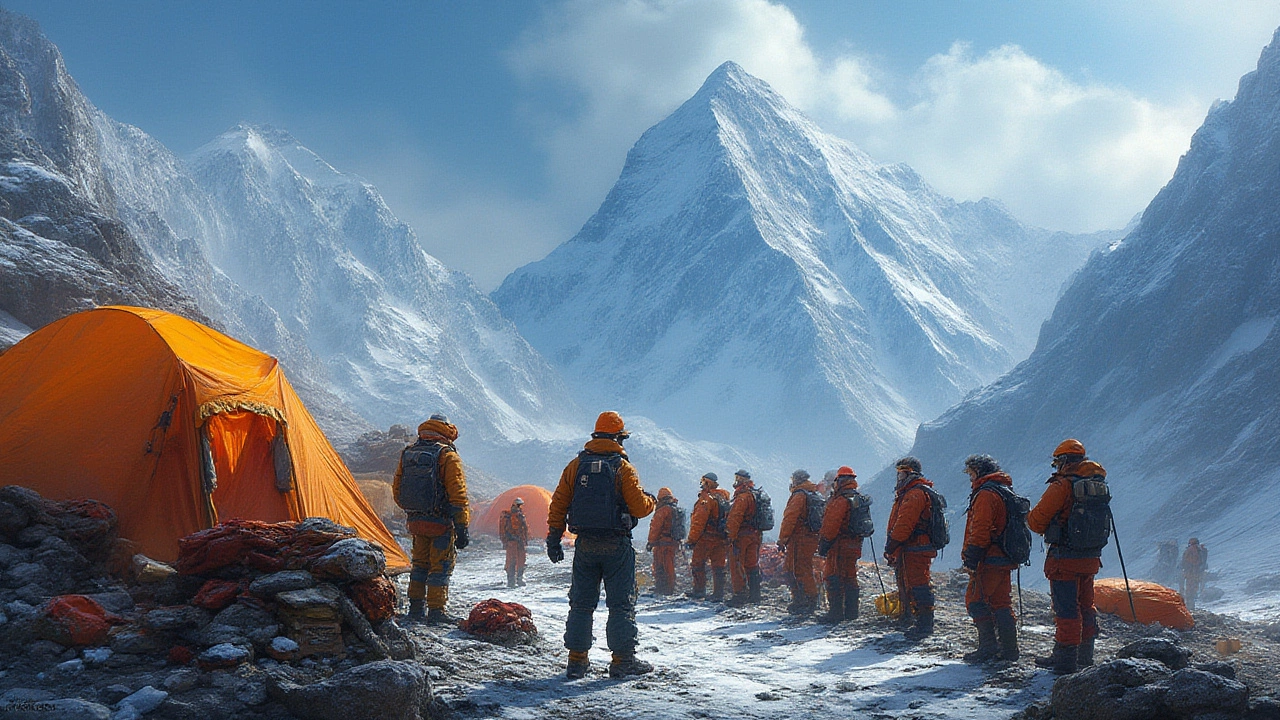SEARCH
Everest Expedition: What You Need to Know Before You Climb
Thinking about standing on the roof of the world? A trip to Mt. Everest isn’t a casual vacation – it needs real prep, a budget, and the right gear. Below you’ll find the basics that turn a wild dream into a doable plan.
Cost Breakdown & Budget Tips
Most first‑time climbers pay between $30,000 and $45,000. The biggest chunk is the trekking permit – about $11,000 for a foreign climber. Add the guide company fee (usually $7,000‑$10,000) and you’ve covered logistics, Sherpa support, and high‑altitude meals.
Don’t forget extra costs: flights to Kathmandu ($800‑$1,200), gear rental if you don’t own it (roughly $2,500), and a safety net for emergencies (travel insurance with high‑altitude coverage can run $500‑$1,000).
Here’s a quick way to keep tabs on spending:
- Permit: $11,000
- Guide company: $8,000
- International flights: $1,000
- Gear (buy vs rent): $2,000‑$3,000
- Insurance & misc: $1,000
Plan for a 10‑15% cushion – mountain weather can delay you and push costs higher.
Gear Checklist & Packing Advice
Good gear is the difference between a smooth climb and a nightmare. Layering is key: a base layer that wicks sweat, an insulating mid‑layer, and a waterproof shell. Bring at least two insulated jackets – one for night bivouacs, another for the summit push.
Don’t skimp on boots. A double‑boot system (inner boot for warmth, outer boot for protection) is standard. Make sure they’re broken in before you leave the base camp.
Other must‑haves:
- Four‑season sleeping bag (rated –20°C)
- Down suit or insulated parka
- Gloves: lightweight for climbing, heavy for the summit
- Headlamp with spare batteries
- Portable stove and fuel
- Personal first‑aid kit
Pack light but smart. Every extra ounce adds up on the ascent. Use compression sacks and label each bag for quick access.
Beyond gear, train your body. Start a cardio routine at least six months out – think running, cycling, or swimming for 3‑5 hours a week. Add strength work for legs and core, and practice with a weighted backpack to simulate the load you’ll carry.
Acclimatization is non‑negotiable. Follow the “climb high, sleep low” rule and allow at least 5‑7 days for the base camp to adapt. Many climbers suffer altitude sickness because they rush the schedule.
Choosing a guide company matters. Look for agencies with a solid safety record, transparent fees, and good reviews from past climbers. Ask about their emergency evacuation plan – it can save lives.
Finally, keep the paperwork tidy. A valid passport, a Nepal visa, the climbing permit, and health certificates (including a recent COVID test if required) should be stored both digitally and in a waterproof pouch.
With the right budget, gear, and training, an Everest expedition moves from a fantasy to a realistic goal. Stay focused, respect the mountain, and you’ll have a story to tell for the rest of your life.

Everest Climb Cost Breakdown: Why Mount Everest Expeditions Are So Expensive
Discover the detailed reasons climbing Mount Everest costs around $40,000, including permits, guides, logistics, and hidden expenses, with smart tips to plan your ascent.
Continue reading